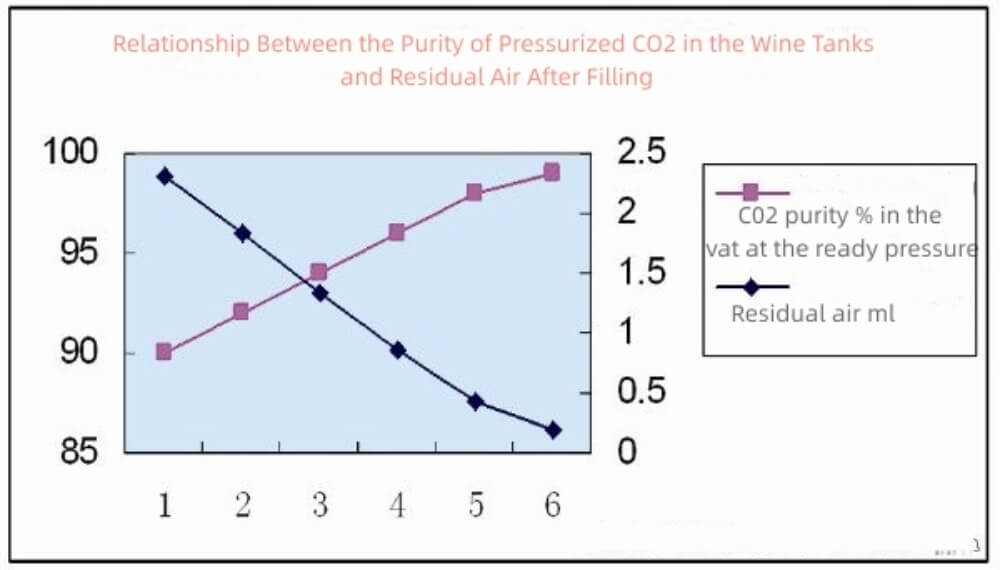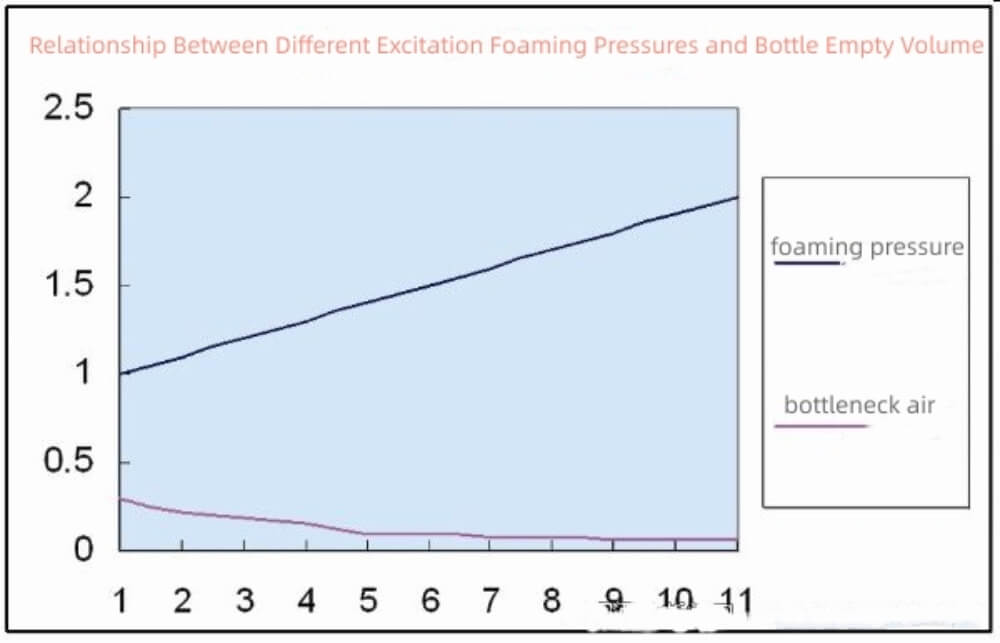Main Influencers of Bottleneck Air
- Residual Air After Vacuum Filling: The air that remains in the neck of the bottle after a single vacuum filling. Example: 4.7 ml in a 580 ml bottle after a single vacuum.
- CO2 Back Pressure: The CO2 that is used to backfill the beer can introduce air into the beer.
- Air Ingress Prior to Capping: The air that gets sucked into the bottle during the instant before capping.
Methods to Control Bottleneck Air
1. Use a Multiple Vacuum Process
Using a two-stage vacuum process drastically reduces residual air. The steps include:
- Initial vacuum extraction
- CO2 back pressure filling
- Second vacuum extraction followed by another CO2 filling
This method can reduce bottleneck air to less than 0.1 ml.
2. Control the Purity of the CO2
You must control the purity of the CO2 to always be above 99% during the filling process. Lower CO2 purity leads to increased bottleneck air, which testing has proven through how closely linked CO2 purity and air content are.
3. Use Different Lengths of Vent Tubes
Use different lengths of vent tubes for various bottle sizes. Make sure to match the vent tubes correctly with the bottles being used to maximize the surface area available for the liquid to flow into the bottle to minimize turbulence and fill air.
4. Use High Pressure to Generate Foam
Use high pressure just prior to capping to expel any residual gas in the neck of the bottle. Control the foam to ensure it is not excessive, which will lead to spilling out of the bottle or inadequate filling.
5. Maintain Temperature and Pressure
Maintain the beer at low temperatures (-1°C to -4°C) during storage to temper the pressure and keep the CO2 dissolved as much as possible. This will reduce foaming and spillage during the filling process.
6. Quality of the Bottles
Make sure the bottles are free of defects such as cracks or bubbles that could cause issues with sealing and allow air to enter during filling.
7. Proper Operation of Capping Machines
Ensure the capping machines are properly maintained and operated to prevent air from being trapped during the capping process.
8. Keep Dissolved Oxygen Low
Control the levels of dissolved oxygen in the beer before bottling to minimize the total amount of oxygen pickup during the filling process.
9. Quality of the Foam
Control the quality of the foam generated during filling. Affects how well the foam can displace air in the neck of the bottle. Proper composition of the foam mixture will facilitate better removal of the bottleneck air.
10. Raise Fill Levels
Raising the fill level decreases the gas volume in the neck, but increases the risk of spillage during pasteurization.
Conclusion
Controlling the air in the neck of beer bottles involves a combination of all of these techniques, utilizing the multiple vacuum process, controlling CO2 purity, using different length vent tubes, temperature and pressure management, and many others. By using all of these methods together, breweries can improve their product quality, increase shelf life, and minimize oxidation problems.




